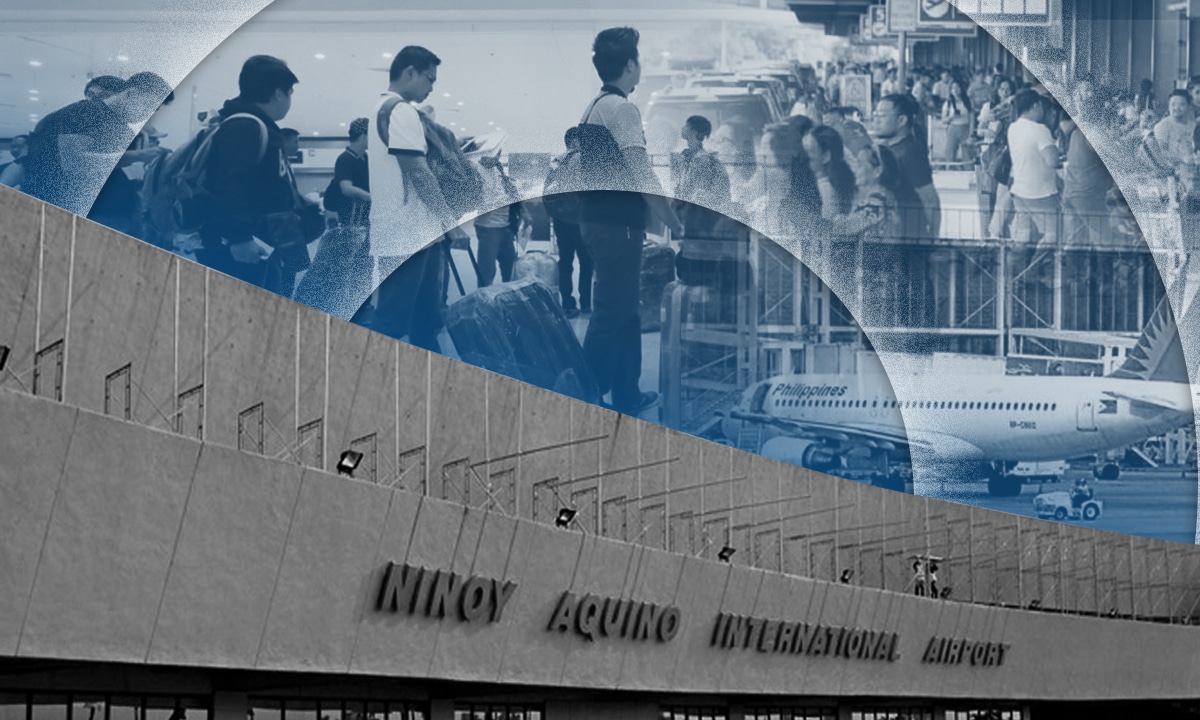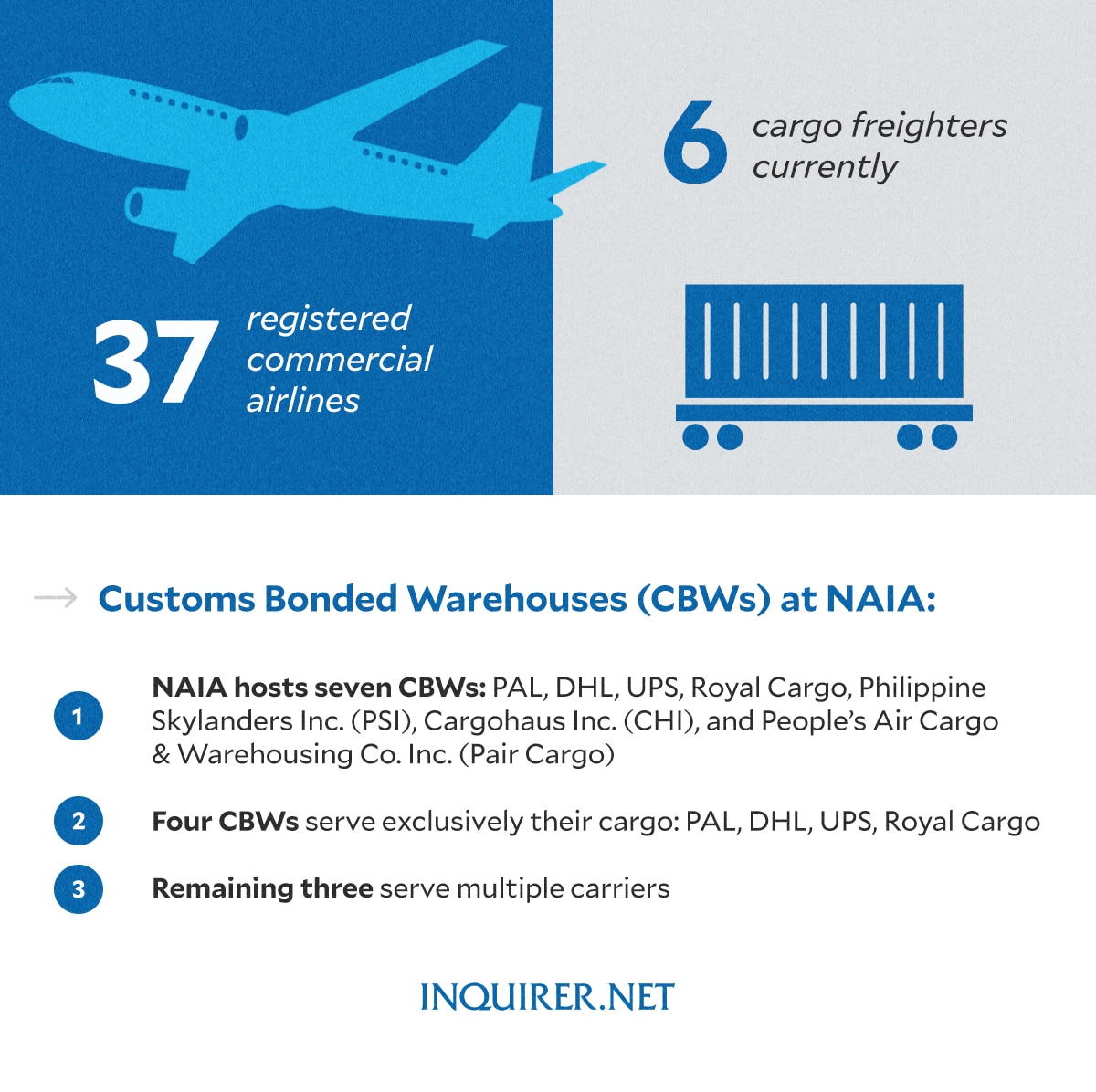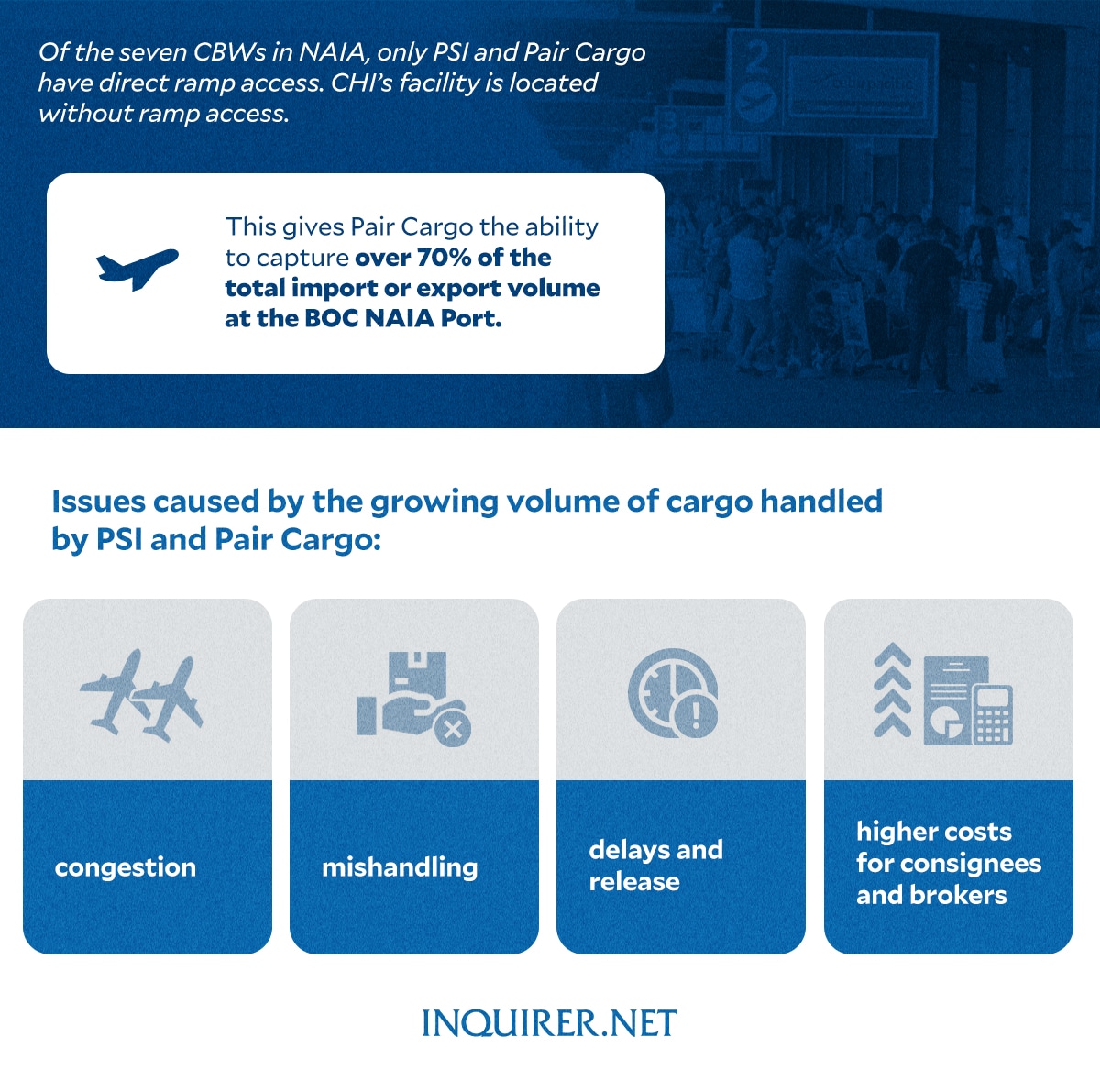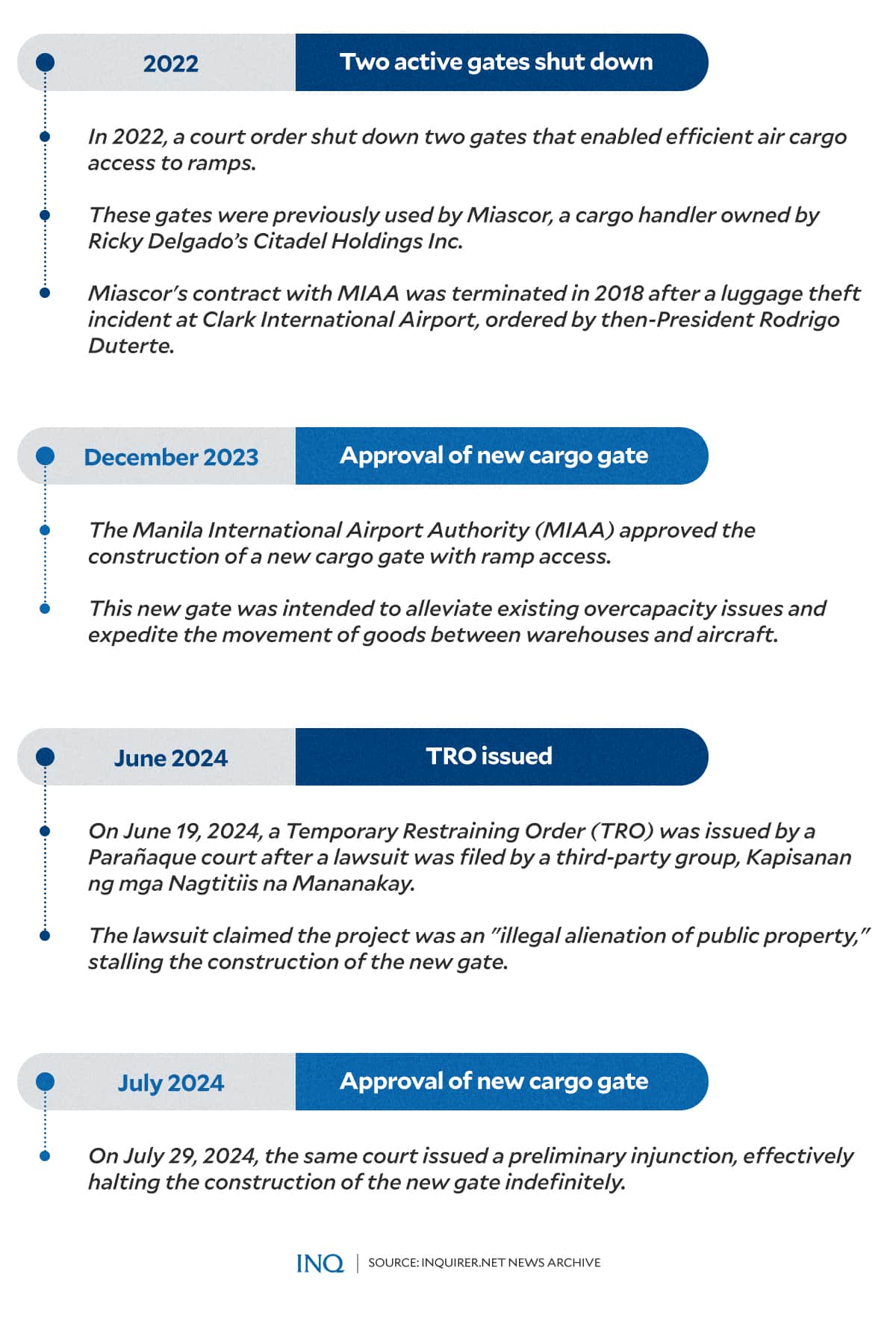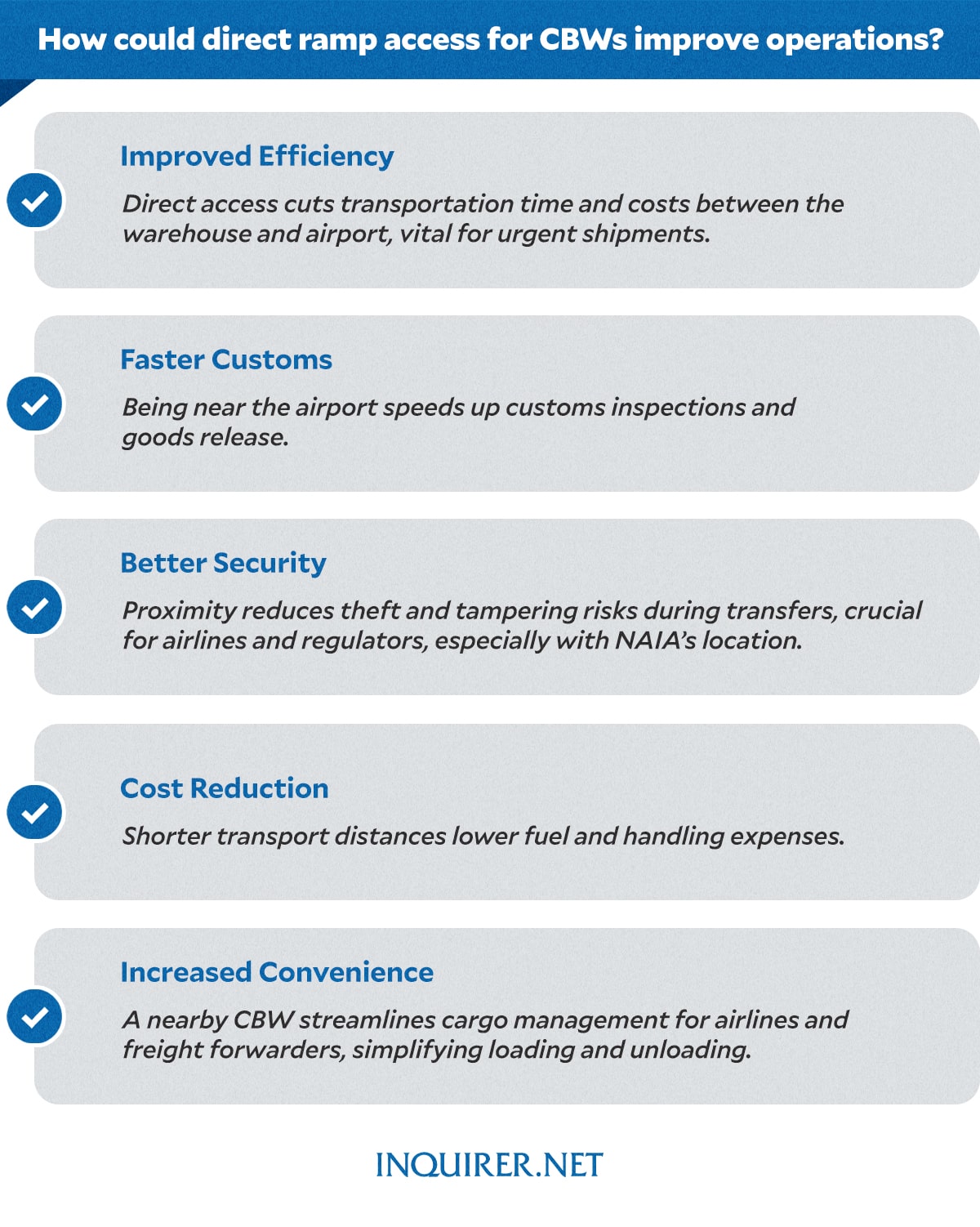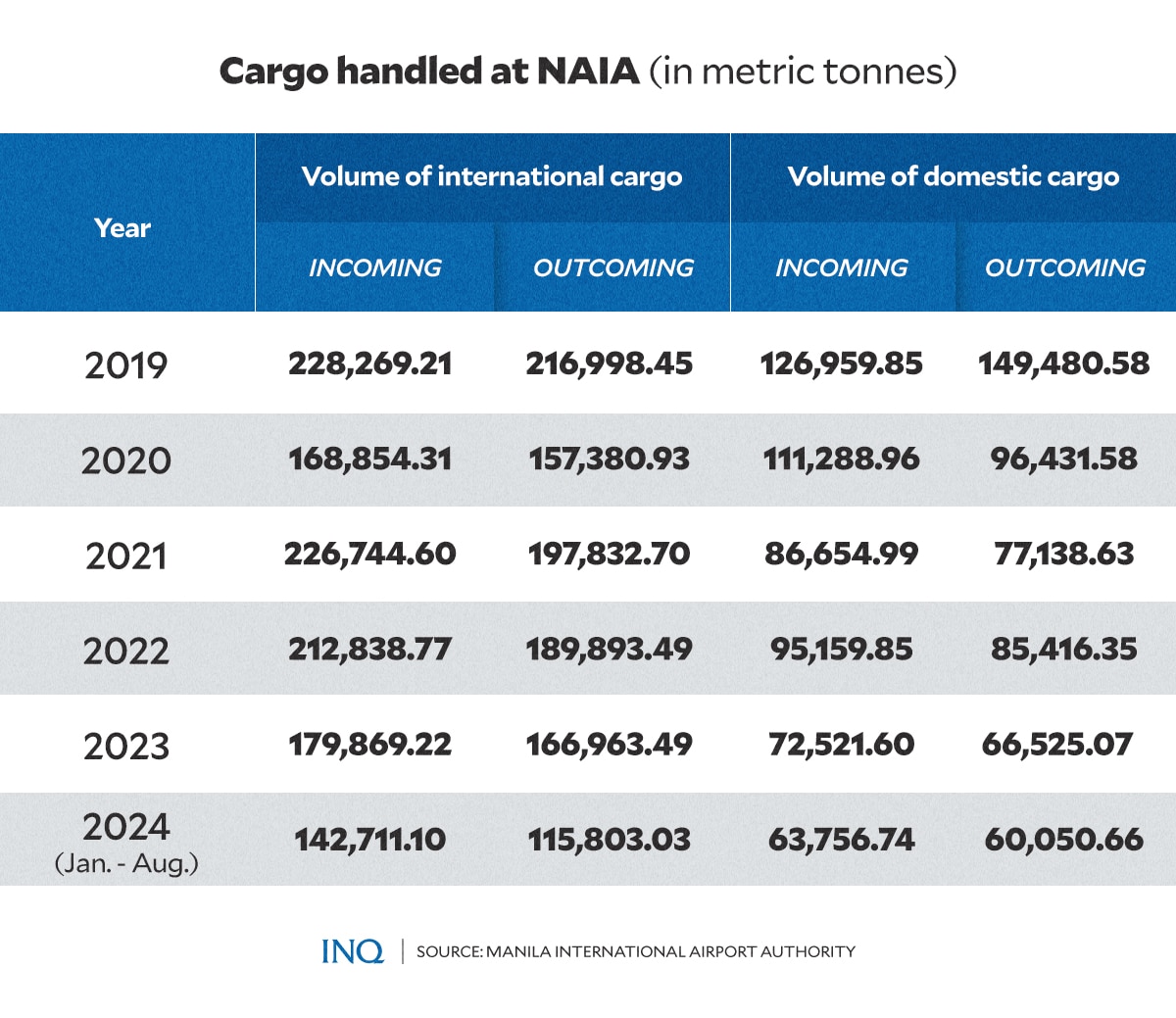Cargo operations challenges emerge amid NAIA rehab
MANILA, Philippines—As the much-anticipated rehabilitation of the Ninoy Aquino International Airport (NAIA) is underway — with a goal to improve capacity, efficiency, and passenger experience — an equally critical issue emerges and remains unresolved: cargo handling.
The P170.6 billion NAIA upgrade by a consortium headed by San Miguel Corporation (SMC), aims to improve NAIA’s runways and terminals over the next 3 to 12 months to enhance the overall passenger experience.
The NAIA modernization and privatization project also seeks to increase NAIA’s annual passenger capacity from 32 million to 60 million over the next 15 years, while generating over 58,000 additional jobs.
READ: SMC wins bid for P170.6-billion Naia rehabilitation project
However, as the airport’s transformation officially began this month, with a focus on upgrading passenger amenities and optimizing runway efficiency, concerns about challenges in cargo facilities have surfaced.
READ: Naia transformation gets off the ground
Ramp access issue
NAIA, the country’s busiest airport, also plays a crucial role as a hub for both international and domestic cargo operations.
Currently, there are seven Customs Bonded Warehouses (CBQ) at NAIA. Four of these — PAL, DHL, UPS, and Royal Cargo — handle their cargo exclusively, while three — Philippine Skylanders Inc. (PSI), Cargohaus Inc. (CHI), and People’s Air Cargo & Warehousing Co. Inc. (Pair Cargo) — cater to multiple carriers.
A key issue arises from the fact that only PSI and Pair Cargo have direct ramp access, allowing more efficient movement of cargo between aircraft and warehouse facilities. The CHI facilities, while located within the NAIA complex, do not have ramp access.
The importance of having ramp access is underscored by Pair Cargo’s ability to handle over 70 percent of the total import or export volume at the Bureau of Customs (BOC) NAIA Port.
The lack of ramp access, on the other hand, poses a significant operational challenge. Those without direct access to aircraft are often forced to rely on third-party services to transport goods to and from the ramp, which can lead to delays, higher costs, and an increased risk of cargo mismanagement.
These additional steps in the handling process also contribute to congestion and longer turnaround times, further reducing the overall efficiency of cargo operations at NAIA.
However, despite having ramp access, the increasing volume of cargo handled by PSI and Pair Cargo has resulted in congestion, mishandling, and delays in the release of goods. These issues have, in turn, led to higher costs for consignees and brokers.
Stakeholders have raised concerns that the ongoing overcapacity and delays could prompt airlines and customers to seek alternative locations or airports, potentially diverting business away from NAIA.
Calls to provide ramp access
In the first half of 2024, NAIA handled 275,492.68 metric tons of cargo, marking a 5.7 percent increase compared to the same period last year. While international cargo volumes have shown consistent growth, domestic cargo has slightly declined, exacerbating existing congestion.
With the current overcapacity and operational inefficiencies, MIAA said adding a new CBW with direct ramp access is essential. Such a facility would play a critical role in alleviating bottlenecks, reducing wait times, and improving the flow of goods through the airport.
The addition of a new CBW is expected to not only boost competition among service providers but also improve overall operational efficiency. This would greatly benefit the supply chain by easing the logistical hurdles that businesses across the country face.
Heightened competition is thought to drive technological advancements, increased investment in innovation, and more efficient processes, ultimately improving service standards and reducing logistics costs.
Meanwhile, CHI has previously proposed expanding its current CBW facility to include ramp access at NAIA — a plan that received approval from the MIAA Board in December 2023. However, legal obstacles have since delayed the project’s implementation.
Closed ramps
In 2020, two active cargo gates previously used by Miascor, a cargo handler owned by Citadel Holdings Inc., were shut down following a court order.
This occurred after Miascor’s contract with MIAA was terminated in 2018, stemming from a luggage theft incident at Clark International Airport, which was directly ordered by then-President Rodrigo Duterte.
READ: DOTr totally shuts door on Miascor
MIAA has long recognized the need to enhance cargo handling operations at NAIA. In December 2023, the agency took a major step forward by approving the construction of a new cargo gate with ramp access.
This project is designed to alleviate increasing congestion and ensure more efficient handling of time-sensitive goods — such as perishable items, pharmaceutical supplies, and urgent shipments — between warehouses and aircraft.
The agency said its December decision was “aimed at the public purpose of upgrading and providing safe, efficient, and reliable airport facilities for international and domestic travel”.
MIAA emphasized that the new gate with ramp access would not only improve operations for cargo handlers and airport management but also ultimately benefit the general public by enhancing overall airport efficiency and reducing delays.
However, in June 2024, a Parañaque court issued a Temporary Restraining Order (TRO) after a lawsuit filed by a third-party group, Kapisanan ng mga Nagtitiis na Mananakay, alleged the new gate would lead to the “illegal alienation of public property.”
The plaintiffs contended that the new cargo gate would provide preferential access to select cargo companies, potentially disadvantaging smaller operators and negatively impacting the general public. In support of their case, they filed a P2-million bond to substantiate their legal challenge.
The legal challenges persisted with a writ of preliminary injunction in July 2024, effectively pausing the construction of the much-needed ramp access, while ongoing congestion and delays in cargo operations continued to strain the airport’s handling and storage capabilities.
MIAA, in its reply, said the plaintiffs had no right to file since they would not suffer any injury from the consequent efficient airport operation.
Why direct ramp access matter
Questions have been raised about who stands to gain from the closure of the two gates, which has made cargo movement at NAIA more complicated and costly than necessary.
While the answer remains unclear, reports suggest that it likely won’t benefit the SMC-led consortium, which has offered the highest amount to the government for the right to modernize NAIA.
The consortium depends on increased revenue to fulfill its obligations under the bid, and the ongoing injunctions only serve to hinder those efforts, delaying crucial upgrades and adding to operational challenges.
READ: BIZ BUZZ: Who doesn’t want a new and improved Naia?
While the privatization of NAIA is widely regarded as an essential step in advancing the country’s transport infrastructure, upgrading air cargo facilities — particularly the proposed expansion of CHI’s CBW facility — is said to be critical to ensuring the success of the airport’s overall modernization.
These enhancements will not only address the current operational challenges, such as congestion and delays but will also bolster the country’s standing as a competitive and reliable logistics hub in the region.
Among the expected benefits of having a direct ramp access for CBWs include:
- Efficiency in transportation: Direct access reduces the time and costs associated with transporting goods between the warehouse and the airport, crucial for time-sensitive shipments.
- Customs clearance: Proximity to the airport streamlines customs processes, allowing for quicker inspection and release of goods.
- Enhanced security: A location near the airport minimizes risks such as theft or tampering during transfers, a key concern for international airlines and regulatory agencies, especially given NAIA’s surrounding residential and business facilities.
- Cost savings: Shorter transport distances translate to reduced fuel costs and handling fees.
- Convenience: For airlines and freight forwarders, having a CBW near the airport facilitates more efficient cargo management, easing the loading and unloading processes.
Marcos’ promise
While President Ferdinand Marcos Jr. has yet to comment or issue a statement on the issue, he has recently vowed to improve the country’s airports.
In his third State of the Nation Address (Sona), Marcos said NAIA will soon be able to accommodate 48 flights per hour and cater to more than 62 million passengers annually.
“More than 70 airports and seaport development projects across the country have now been completed and another 350 ongoing projects are set to be completed by the year 2028,” he added.
READ: Highlights: Sona 2024
In March, he directed the SMC-led consortium to fix the problems that have plagued the NAIA image to the point of being labeled one of the world’s worst airports.
“The gateway that should be the red carpet to our country has become a dirty rug that unfairly defined a visitor’s first impression, which we all know is extremely important for all of those who are tourists, who are travelers, who… for any reason have come to the Philippines,” he said
We have to fix these problems now,” the President said in a speech during the ceremonial signing of the NAIA concession agreement in Malacañang.
He stressed that the country had paid “a heavy price” for its failure to improve NAIA.
RELATED STORIES:
Naia rehab execs vow first upgrades by Christmas
New air traffic management system to be installed Monday
